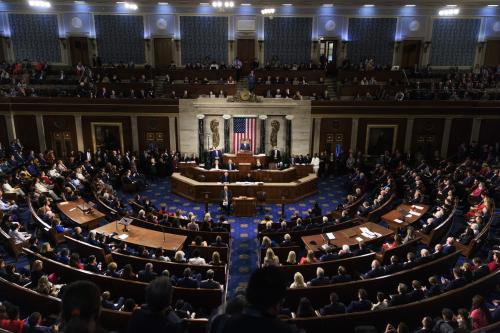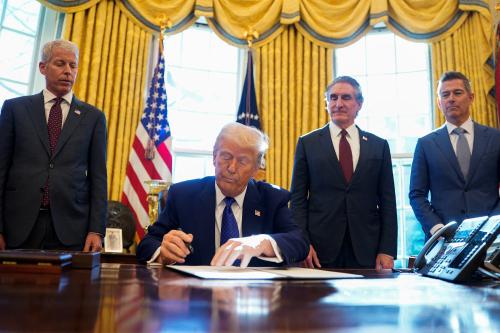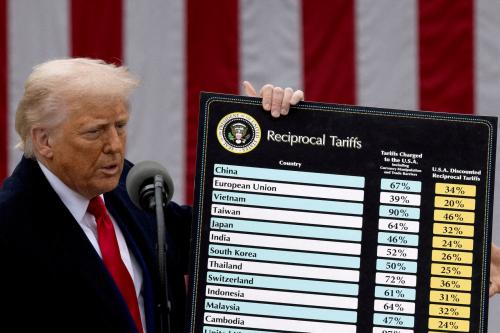What would happen if, when Americans show up at work tomorrow, after the Labor Day cookouts and trips to the beach, they all were to vote on whether to join a union? The data may surprise you: more than fifty percent of nonunion workers say that, if an election were held in their workplace tomorrow, they would vote for union representation. And yet: while the desire to join a union has grown steadily since the 1980s, actual union membership continues its long, steady decline.
What’s going on? Though unions continue to deliver things that people want, like higher wages, and have even managed to make inroads into new sectors of the economy, union opponents have built structural barriers to labor organizing that continue to deplete membership. And the popular desire for access to union benefits has not translated into a backlash against these measures.
In partnership with faith and community groups, unions have been winning on the minimum wage. At least eighteen states have passed a minimum wage increase in the past two years. Many cities, including Seattle, San Francisco, Los Angeles, and New York, have seen campaigns to raise the wage to $15 an hour.
The recent victories are part of a long history in which unions have played a central role. Unions have been shown to increase wages for both members and nonunion workers. Indeed, economic equality and unionization go together; statistical analyses have shown that “a fifth to a third of the growth in inequality” can be explained by the precipitous decline in union labor in recent decades.
Unions have also made some inroads on expanding protections to more workers. As the structure of the economy has shifted, Americans are working different kinds of jobs. Organized labor has not always succeeded in reaching beyond its traditional strongholds and into new sectors of the labor force. But here, too, unions can point to some victories:
- Last month, an appellate court reinstated Labor Department regulations extending minimum wage and overtime protections to home care workers.
- The same week, The National Labor Relations Board determined that franchise employees should be allowed to negotiate with the parent company, not just the local franchise owner, a major victory for fast food workers.
- The Teamsters are trying to mobilize Uber drivers in California to fight what some drivers describe as below-minimum wage earnings. One important step is a ruling, just last week, that the drivers can launch a class action lawsuit against the ride service company.
- There are even some signs of union activism among white collar workers. Several prominent news rooms have voted to unionize this year, including Gawker, Salon, the Guardian, and Vice. There is also an ongoing effort at Columbia University to overturn the prohibition on private university graduate student unions.
So that’s the good news for union supporters. Unions are still providing concrete benefits and have shown at least some evidence that they can expand their appeal in response to a shifting economy. But these scattered victories come in the face of major defeats.
Unions have continued to suffer losses on the structural things that let them function effectively. In an impressive multi-decade campaign, conservative business groups have effectively undercut two key things that make unions function: dues collection and the right to collectively bargain. This year, that trend is mostly unchanged. Wisconsin became the 25th state to allow workers to avoid paying for the bargaining costs of the union that represents them – something conservatives call “right to work” and liberals call “free-riding,” and which everyone agrees reduces the ability of unions to raise funds. The passage comes on the heels of the elimination in Wisconsin of the collective bargaining rights of most public sector unions and Supreme Court decision exempting many public sector workers from paying union dues.
What unions have failed to do is convert the general desire for a union into a successful popular backlash against these measures. This is the difference between diffuse support (the kind readily captured by polls) and concentrated activism (the thing that can actually create change).
And that mobilization challenge is compounding itself over time. As unions have declined and wages have stagnated, workers have less time and less money to devote to daily needs, much less political activism. Moreover, when fewer people have experience with union activity, the idea of labor resistance becomes more remote. As labor campaigner and author Richard Yeselson has noted, “The problem isn’t that most people hate unions. The problem for unions is that most people don’t care about them, or think about them, at all.”
In sum, winning on wages and expanding organizing into growing sectors of the economy are unlikely to be enough to stem the tide of union decline. Americans will not get to vote tomorrow on their representation at work. And without a union to fight for paid holidays, millions will not even have had the day off.
The Brookings Institution is committed to quality, independence, and impact.
We are supported by a diverse array of funders. In line with our values and policies, each Brookings publication represents the sole views of its author(s).




Commentary
On Labor Day, a look at the state of the unions
September 7, 2015